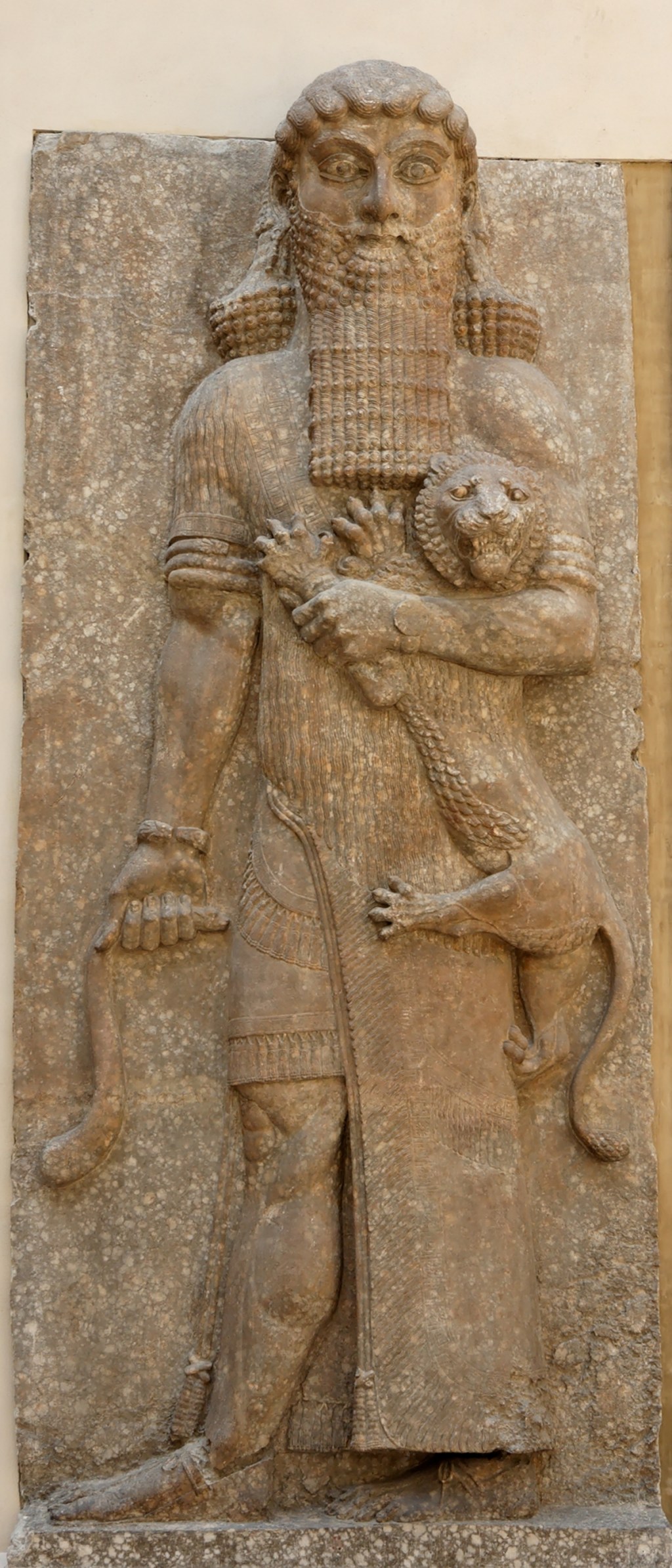The Mighty Gilgamesh Lion: Unleash The Power And Roar!
Gilgamesh Lion: The Majestic Beast of Ancient Mesopotamia
Introduction
Good People, welcome to the captivating world of lions and their historical significance. In this article, we will delve into the fascinating tale of the Gilgamesh Lion, a legendary creature that has left an indelible mark on ancient Mesopotamian culture. Lions Enthusiasts, prepare yourselves for an extraordinary journey into the depths of mythology and symbolism as we explore the grandeur of the Gilgamesh Lion.
The Gilgamesh Lion holds a prominent place in the epic of Gilgamesh, one of the oldest recorded stories in human history. This ancient Mesopotamian mythological creature embodies power, courage, and strength, captivating the hearts and minds of people for centuries. Let us unravel the secrets and mysteries surrounding the Gilgamesh Lion and discover the significance it holds in the annals of history.
1 Picture Gallery: The Mighty Gilgamesh Lion: Unleash The Power And Roar!

What is the Gilgamesh Lion?
🦁 The Gilgamesh Lion is a mythical creature that plays a pivotal role in the epic of Gilgamesh, an epic poem from ancient Mesopotamia. This fierce and majestic beast represents the power and authority of the king, Gilgamesh. Depicted as a lion with wings, the Gilgamesh Lion is a symbol of strength, courage, and divine protection.
The Gilgamesh Lion is often portrayed as a guardian figure, standing at the entrance of temples and palaces, warding off evil spirits and protecting sacred spaces. It is a testament to the reverence bestowed upon lions in Mesopotamian culture, as they were believed to possess supernatural qualities and were associated with the gods.
Who is Gilgamesh Lion?

Image Source: wikimedia.org
🦁 The Gilgamesh Lion is not an individual lion but rather a representation of the king, Gilgamesh, and his authority. Gilgamesh, believed to be a historical figure and the fifth king of Uruk, was a legendary hero in ancient Mesopotamian mythology. The Gilgamesh Lion serves as a symbol of his power, strength, and divine right to rule.
In the epic of Gilgamesh, the king embarks on various quests and adventures, battling mythical creatures and facing formidable challenges. The Gilgamesh Lion, as his trusted companion and protector, shares in these heroic endeavors, showcasing the king’s prowess and courage.
When did the Gilgamesh Lion Exist?
🦁 The Gilgamesh Lion originated in ancient Mesopotamia, a historical region that encompassed present-day Iraq, Syria, and parts of Turkey and Iran. The epic of Gilgamesh, where the Gilgamesh Lion is prominently featured, dates back to the 3rd millennium BCE, making it one of the oldest known literary works.
Ancient Mesopotamia was renowned for its rich mythology and cultural heritage, and the Gilgamesh Lion played a significant role in shaping the beliefs and traditions of its people. Its existence is intertwined with the ancient civilizations that flourished in the region, leaving an enduring legacy that continues to captivate us today.
Where can the Gilgamesh Lion be Found?
🦁 The Gilgamesh Lion can be found in the ancient ruins and artifacts of Mesopotamia. Archaeological discoveries, such as sculptures, reliefs, and cuneiform tablets, depict the Gilgamesh Lion in various contexts, emphasizing its importance in the ancient world.
One notable representation of the Gilgamesh Lion is the famous Ishtar Gate of Babylon, constructed during the reign of King Nebuchadnezzar II in the 6th century BCE. The gate, adorned with beautifully glazed tiles depicting lions, including the Gilgamesh Lion, stands as a testament to the cultural significance of lions in Mesopotamian art and architecture.
Why is the Gilgamesh Lion Significant?
🦁 The Gilgamesh Lion holds immense significance in ancient Mesopotamian culture due to its association with power, courage, and divine authority. As a mythical creature, it embodies the qualities desired in a king, symbolizing the ideal ruler who protects and leads his people.
The Gilgamesh Lion also serves as a reminder of the enduring human fascination with lions. Throughout history, lions have been revered and admired for their strength and majestic presence. The Gilgamesh Lion, with its mythical attributes, captures the essence of these regal beasts and immortalizes their symbolism in the annals of mythology.
How does the Gilgamesh Lion Influence Modern Culture?
🦁 The influence of the Gilgamesh Lion can be seen in various aspects of modern culture. Its portrayal in literature, art, and film attests to its enduring allure and fascination. The epic of Gilgamesh, where the Gilgamesh Lion plays a central role, continues to inspire contemporary works and captivate audiences worldwide.
The symbolism of the Gilgamesh Lion can also be found in heraldry and national emblems, as lions have long been associated with royalty, courage, and strength. These enduring themes resonate with people across cultures, transcending time and geography.
Pros and Cons of the Gilgamesh Lion
Pros:
1. 🦁 Symbolizes power and strength
2. 🦁 Represents divine protection and authority
3. 🦁 Embodies the ideal king and leader
4. 🦁 Captures the imagination with its mythical attributes
5. 🦁 Inspires awe and reverence for lions
Cons:
1. 🦁 Limited historical documentation on the Gilgamesh Lion
2. 🦁 Mythological nature may lead to misconceptions
3. 🦁 Requires interpretation and understanding of ancient culture
4. 🦁 Symbolism and significance may vary among different cultures
5. 🦁 Limited availability of authentic artifacts and representations
Frequently Asked Questions
1. What is the origin of the Gilgamesh Lion?
The Gilgamesh Lion originated in ancient Mesopotamia, specifically in the epic of Gilgamesh, one of the oldest recorded stories in human history.
2. Is the Gilgamesh Lion a real creature?
No, the Gilgamesh Lion is a mythical creature that symbolizes power, strength, and divine authority.
3. How does the Gilgamesh Lion influence modern culture?
The Gilgamesh Lion’s influence can be seen in literature, art, and film, captivating audiences and inspiring contemporary works.
4. Are there any existing depictions of the Gilgamesh Lion?
Yes, the Gilgamesh Lion can be found in ancient ruins and artifacts of Mesopotamia, such as sculptures and reliefs.
5. What are the main characteristics of the Gilgamesh Lion?
The Gilgamesh Lion is depicted as a lion with wings, symbolizing strength, courage, and divine protection.
Conclusion
In conclusion, the Gilgamesh Lion stands as a testament to the enduring fascination with lions and their symbolism throughout history. Its portrayal in the epic of Gilgamesh and its influence on ancient Mesopotamian culture highlight the significance of this majestic creature.
From its mythical attributes to its representation of power and authority, the Gilgamesh Lion continues to captivate our imaginations and inspire awe. Its legacy lives on in the remnants of ancient civilizations and the cultural heritage they have left behind.
As we reflect upon the grandeur of the Gilgamesh Lion, let us remember the profound impact it has had on human history and the enduring allure of lions in our collective consciousness.
Final Remarks
🦁 Lions Enthusiasts, we hope this article has provided a deeper understanding of the Gilgamesh Lion and its significance in ancient Mesopotamian culture. While much remains shrouded in mystery, the allure of this mythical creature continues to captivate us.
As with any exploration into history and mythology, it is essential to approach the subject with an open mind and a thirst for knowledge. The Gilgamesh Lion offers a tantalizing glimpse into the rich tapestry of ancient civilizations, reminding us of the power of storytelling and the enduring legacy it leaves behind.
May the spirit of the Gilgamesh Lion inspire you to explore further and uncover the hidden wonders of our shared human heritage. Let us preserve and honor the legends of old, ensuring that they continue to inspire generations to come.
This post topic: Lions


